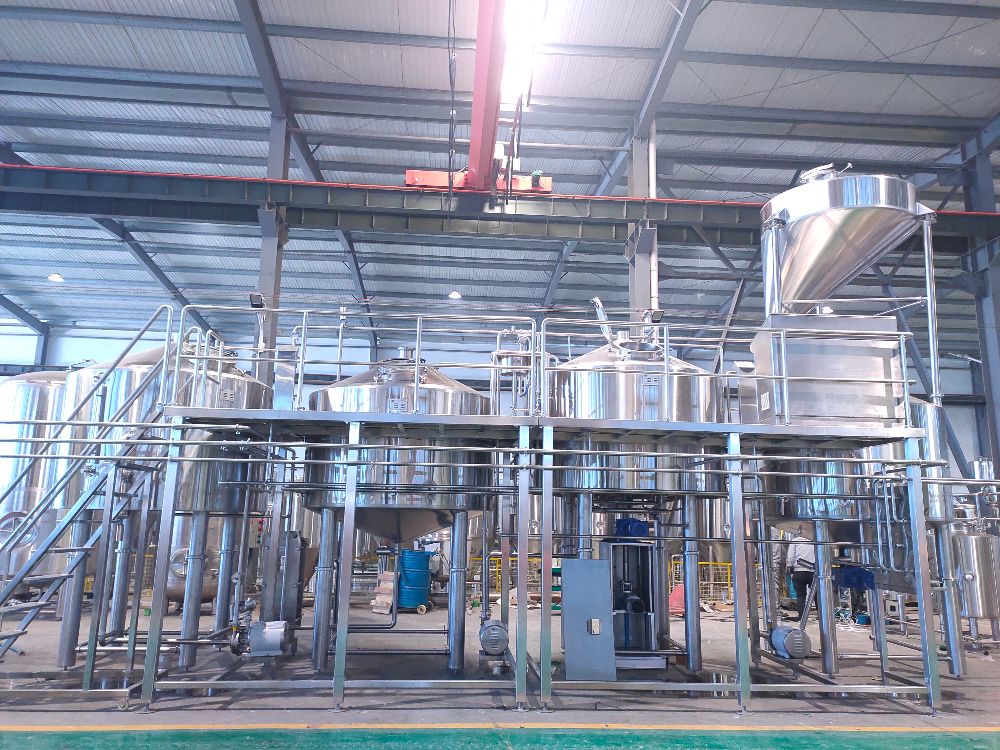Is it necessary to keep pressure during doing dry hopping on fermenters?
- Sep 19, 2023
- 51
- tiantai
In last 2 articles, we discussed necessity and time to do the dry hopping on beer fermenters. So, is it necessary to keep pressure during doing dry hopping in beer fermenation tank??
It is not necessary to keep pressure in fermenters during dry hopping, but the choice of whether to maintain pressure or not can depend on various factors, including the specific equipment being used and the desired outcome for the beer. Here are some considerations:
Open Fermentation: In traditional open fermentation vessels, there is no pressure control. Dry hopping can still be performed by simply adding hops to the fermenting beer. The open design allows for the release of any gas produced during the process.

Closed Fermentation: In closed fermentation vessels (such as conical fermenters or fermentation tanks with sealed lids), maintaining a certain level of pressure may be necessary to prevent air from entering the vessel during dry hopping. This can help minimize the risk of oxidation, which can negatively impact the beer's flavor and stability. Brewers may use a blanket of carbon dioxide (CO2) or a closed-loop system to maintain a slight positive pressure in the vessel.
Pellet Hops vs. Whole Leaf Hops: The form of hops used can also affect pressure considerations. Pellet hops tend to disintegrate more easily and can release gas when added to the beer, potentially causing pressure to build up in a closed vessel. Whole leaf hops are less likely to do this, but they may require more space in the fermenter.
Safety Precautions: When working with closed fermentation vessels and pressure, it's important to take safety precautions to prevent over-pressurization. Brewers should be familiar with the equipment and have proper pressure relief mechanisms in place to avoid any accidents.
Ultimately, the decision to maintain pressure during dry hopping depends on the specific brewing setup and the brewer's preferences. Some brewers prefer to work with closed, pressurized vessels to minimize oxidation risks, while others may choose open fermentation or employ other techniques to manage pressure. The key is to ensure that the dry hopping process is carried out in a way that maintains the desired beer quality and flavor profile while adhering to safety protocols.
We can provide complete brewery system and also customize beer fermenters. Welcome to contact me to discuss your brewery project and customize your desired beer fermentation tanks. Cheers!
Nicole Zhou
Sales manager | Tiantai beer equipment
Email: [email protected]
It is not necessary to keep pressure in fermenters during dry hopping, but the choice of whether to maintain pressure or not can depend on various factors, including the specific equipment being used and the desired outcome for the beer. Here are some considerations:
Open Fermentation: In traditional open fermentation vessels, there is no pressure control. Dry hopping can still be performed by simply adding hops to the fermenting beer. The open design allows for the release of any gas produced during the process.

Closed Fermentation: In closed fermentation vessels (such as conical fermenters or fermentation tanks with sealed lids), maintaining a certain level of pressure may be necessary to prevent air from entering the vessel during dry hopping. This can help minimize the risk of oxidation, which can negatively impact the beer's flavor and stability. Brewers may use a blanket of carbon dioxide (CO2) or a closed-loop system to maintain a slight positive pressure in the vessel.
Pellet Hops vs. Whole Leaf Hops: The form of hops used can also affect pressure considerations. Pellet hops tend to disintegrate more easily and can release gas when added to the beer, potentially causing pressure to build up in a closed vessel. Whole leaf hops are less likely to do this, but they may require more space in the fermenter.
Safety Precautions: When working with closed fermentation vessels and pressure, it's important to take safety precautions to prevent over-pressurization. Brewers should be familiar with the equipment and have proper pressure relief mechanisms in place to avoid any accidents.
Ultimately, the decision to maintain pressure during dry hopping depends on the specific brewing setup and the brewer's preferences. Some brewers prefer to work with closed, pressurized vessels to minimize oxidation risks, while others may choose open fermentation or employ other techniques to manage pressure. The key is to ensure that the dry hopping process is carried out in a way that maintains the desired beer quality and flavor profile while adhering to safety protocols.
We can provide complete brewery system and also customize beer fermenters. Welcome to contact me to discuss your brewery project and customize your desired beer fermentation tanks. Cheers!
Nicole Zhou
Sales manager | Tiantai beer equipment
Email: [email protected]


.jpg)

